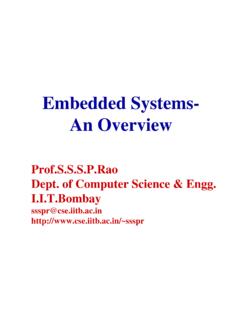Transcription of SPI Configuration and Flash Programming in UltraScale ...
1 XAPP1233 ( ) October 20, 1 SummaryThis application note describes the UltraScale FPGAs master serial peripheral interface (SPI), 4-bit datapath (x4 or quad) Configuration mode. The x4 mode is recommended, but the 1-bit datapath (x1) and 2-bit datapath (x2) modes are easily adapted from the x4 mode if needed. The application note reviews the basics of master SPI Configuration that can aid in successful SPI Configuration and debugging of Configuration during initial design document also includes instructions for generating a bitstream for SPI Configuration and Programming this bitstream into the SPI memory device using the Vivado Design Suite Integrated Design Environment (IDE) as well as a Tcl flow that can be used from the command line.
2 A sample set of connections between the SPI memory device and the FPGA required for master SPI x4 are also master SPI Configuration mode of UltraScale FPGAs enables a low pin count Configuration option. UltraScale FPGAs have four dedicated data pins in the Configuration bank (bank 0) allowing for medium Configuration speed via quad SPI serial NOR Flash devices that adhere to the quad SPI Flash recommends laying out the board for this x4 width to achieve a fourfold speed-up in Configuration time over x1 master SPI. Because all SPI x4 pins are in the dedicated bank 0, no additional user I/O pins are lost as a result of using x4. The x1 and x2 widths are supported and easily adapted from the x4 case presented in this application note.
3 The UltraScale FPGA also introduces a master SPI dual quad mode that allows for higher Configuration rates by using two quad SPI in parallel. Dual quad SPI Configuration is not covered in detail in this application note. Refer to UltraScale Architecture Configuration User Guide (UG570) [Ref 1] for details on the x8 Programming of the Flash is possible using the Vivado Design Suite. Referred to as indirect Programming , the Vivado Design Suite is able to program the UltraScale FPGA Configuration bitstream into the SPI Flash using JTAG. The Vivado Design Suite supports a range of SPI Flash densities with some memories large enough to store multiple bitstreams of even the largest UltraScale FPGAs.
4 The extra storage can be accessed after Configuration via an embedded SPI controller added to the interconnect logic. Figure 1 represents both the indirect Programming flow and the Configuration sequences at a high Note: UltraScale FPGAsXAPP1233 ( ) October 20, 2017 SPI Configuration and Flash Programming in UltraScale FPGAsAuthors: Matt Nielson and Ryan RumseyIntroductionXAPP1233 ( ) October 20, 2 Process flow overview:1. The SPI Flash is on-board and is connected directly to the target FPGA s Configuration interface. The board is connected to a local workstation via a Programming cable such as the Xilinx Platform Cable USB II or Digilent Programming The Vivado Design Suite, which is installed on the local workstation, contains an indirect Programming bitstream.
5 It also has access to the final target bitstream to be programmed into the SPI Using Hardware Manager from the Vivado Design Suite, the target UltraScale FPGA is configured using the indirect Programming bitstream. The Vivado Design Suite is then used to program the SPI Flash with the target bitstream over the JTAG connection through the indirect Programming Now that the SPI Flash is programmed with the target bitstream, the UltraScale FPGA configures directly from the SPI Flash after a PROGRAM_B assertion or power cycle if the mode pins are set for master SPI Configuration UltraScale FPGA is capable of configuring itself from serial NOR Flash memories that support the SPI fast read and SPI quad output fast read commands.
6 This Configuration mode offers a simple and reliable Configuration solution while not requiring any user I/O pins. Being a x4 wide Configuration interface, it can offer medium Configuration speeds. If shorter Configuration times are required, other Configuration options such as Slave SelectMAP (x8, x16, x32), Master BPI (x16), or Master SPI x8 (which uses two SPI Flash devices in parallel) should be considered. See UltraScale FPGA BPI Configuration and Flash Programming (XAPP1220) [Ref 2] or UltraScale Architecture Configuration User Guide (UG570) [Ref 1] for details on these Configuration modes. See the Appendix for details on Configuration time Target - Figure 1 Figure 1:Vivado SPI Flash Programming and Configuration FlowTarget BoardVivado ToolsHardware ManagerProgramming BitstreamDesign BitstreamUltrascale FPGAS erial NOR Flash Memory (SPI) Programming WorkstationJTAG2413x1233_01_051515 SPI BasicsXAPP1233 ( ) October 20, 3 The required steps for configuring an UltraScale FPGA from SPI Flash can be described at a high level as:1.
7 Understand the basics of SPI and master SPI quad Configuration : SPI Lay out the board for FPGA Configuration via SPI Flash : Board Layout for Master SPI Prepare target bitstream (as file) from the Vivado Design Suite: Master SPI Configuration Program the NOR Flash in-system using the Vivado Design Suite hardware manager: Program the SPI Configure the target FPGA from the serial NOR Flash : Configure the Target steps make up the major sections in this application note. Several additional sections are provided in the an SPI SPI x1, x2, and SPI Configuration Constraints: IDE and Troubleshooting GuidelinesSPI BasicsA basic understanding of the subset of the SPI and quad SPI standard used for master SPI Configuration in UltraScale FPGAs can help ensure successful Configuration and assist in troubleshooting possible Configuration actual SPI standard is a simple chip-to-chip data link often used in embedded systems to communicate with memories and sensors.
8 In its original form, referred to as x1 width in this application note, SPI operates in a full duplex mode sending commands and addresses from the master over the master-output, slave-input (MOSI) line and receiving data over the master-input, slave-output (MISO) line. Data is synchronous with an SPI clock (SCLK) signal, and the slave device is selected via an SPI select (SS#) signal. Figure 2 shows the x1 interface between an SPI master and an SPI BasicsXAPP1233 ( ) October 20, 4In addition to the pins described above, the SPI Flash can have additional pins that can be used to control other special functions. These additional pins can vary with the SPI Flash vendor, however, two common special function pins are hold and write protect.
9 The hold and write protect pins serve as additional data pins in SPI x4 mode as described in Table 1. This table summarizes the data pins as well as different names commonly used by different Target - Figure 2 Figure 2:SPI Master/Slave Interface63, 0 DVWHU6&/.66 026,0,626&/.66 026,0,6263, 6 ODYHx1233_02_032315 Table 1: SPI Flash Data PinsSPI Signal NameUltraScale FPGA Pin Name ( UltraScale FPGA Signal Name)N25Q256A(1)(2) Pin NameOther Common NamesPin FunctionSCLKCCLK (CCLK)CSCK, CLKS ynchronous clock driven by master to #RDWR_FCS_B (FCS_B)S#CS#Active-Low slave (D00_MOSI)DQ0SI, IO0, SIO0, DIMaster-output, slave-input. Used as LSB data bit in x2 and x4 output (D01_DIN)DQ1SI, IO1, SIO1, DOMaster-input, #D02 (D02)DQ2WP#, IO2, SIO2 Write protect.
10 Used as data pin in x4 #D03 (D03)DQ3 HOLD#, IO3, SIO3 Hold or pause without deselecting the device. Used as the MSB data bit in x4 : 1. Micron serial NOR Flash memory [Ref 3].2. The M25QU256 is compatible with the BasicsXAPP1233 ( ) October 20, 5 The waveform in Figure 3 shows a fast read command (0Bh) up to the first few bits of the synchronization word returned by the slave if that slave contains a valid UltraScale FPGA Configuration bitstream at address 0. The read command continues until the slave select line is deasserted by the master. Data is always transmitted as most significant bit relevant to Figure 3: Clock a = 32 cycles for 24-bit addressing or 40 cycles for 32-bit addressing fast read commands.



















